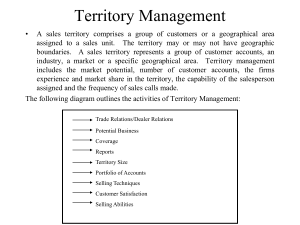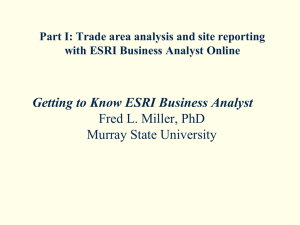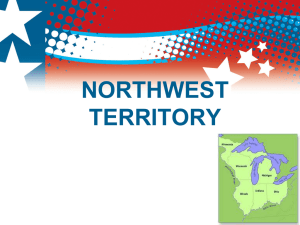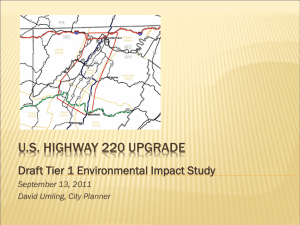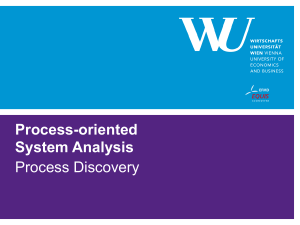Lecture 5 - Chapter 8
advertisement
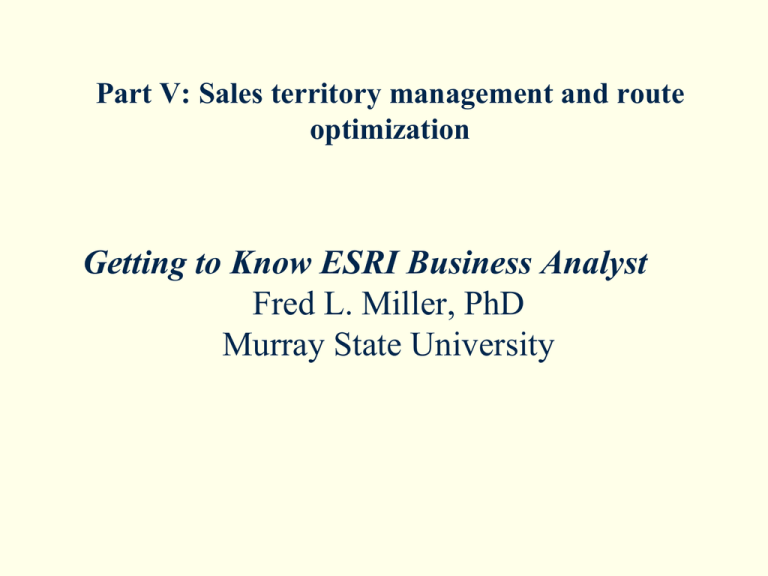
Part V: Sales territory management and route optimization Getting to Know ESRI Business Analyst Fred L. Miller, PhD Murray State University Presentation topics This presentation will cover: The decision scenario for Living in the Green Lane Relevant business GIS tools and tasks Chapter 8: Building a profile of distinctive customer characteristics Build sales territories around seed points with the Territory Design extension Designate attributes to use in territory balancing schemes Create multilevel sales organizational schemes Realign sales territories to meet organizational objectives Designate stops on a service technician’s route Optimize route efficiency with Business Analyst Desktop’s Find Route tool Determine efficiencies and cost savings resulting from route optimization Evaluation of ROI for business GIS analysis Business GIS learning goals and skills LITGL Decision Scenario With three successful stores in place, Janice and Steven wish to: Add lawn and garden maintenance services as well as organic pest-control services to LITGL’s product line Hire a six-person sales force, two at each store, to sell these services to local consumers Hire lawn-care teams and pest-control technicians to service customer accounts Design an effective sales territory system for the sales force Install a routing system for lawn-care teams and pestcontrol technicians Relevant Business GIS Tools and Tasks Create Territories layer using Territory Design extension Build sales territories around sales staff locations relative to LITGL’s three stores Organize sales territories by store Balance territories relative to sales potential Identify clients to be included in customer service technician’s daily route Design the most efficient routes for daily service calls Determine resulting efficiencies and savings Chapter 8: Sales territory design and balancing; route optimization In this chapter, you will perform the following Business Analyst Desktop tasks: Geocode customer data with locator services and symbolize it on a map Use Layer Properties to view attribute distribution and identify high-volume customers Use a spatial join to attach demographic and Tapestry Segmentation attributes to customer features based on their location Use summary tables to calculate geodemographic and Tapestry Segmentation lifestyle profiles of high-volume customers Use Tapestry Segmentation data with Market Potential Indexes to identify customer values, media habits, product preferences, and purchasing patterns Use this information to make product line and merchandising decisions appropriate for Living in the Green Lane’s best customers Create a sales territory system with store and territory levels Balance territories geographically and by sales potential Map service technician’s daily service calls and determine optimum route Business GIS learning goals and skills In Part V, you will learn to use Business Analyst Desktop to: build sales territories around sales representative’s homes with the Territory Design extension designate attributes and weights to use in preliminary territory balancing schemes create multilevel sales organizational schemes (stores and territories) realign sales territories to meet organizational objectives for geographic and sales potential balance designate stops on a service technician’s route and add them to a map optimize route efficiency with Business Analyst Desktop’s Find Route tool determine efficiencies and cost savings resulting from route optimization Evaluation of ROI for business GIS analysis The costs of this Business Analyst application are: A Business Analyst Desktop, which includes the Territory Design tool The time of managers and business GIS analyst The benefits of this Business Analyst application are: Increased revenue from more sales calls resulting from efficient territories and optimized routing Greater customer satisfaction and retention from more efficient territories and optimized routing The estimated incremental revenues are: More than $200,000 of increased revenue and reduced costs Part V: Sales territory management and route optimization Getting to Know ESRI Business Analyst Fred L. Miller, PhD Murray State University
